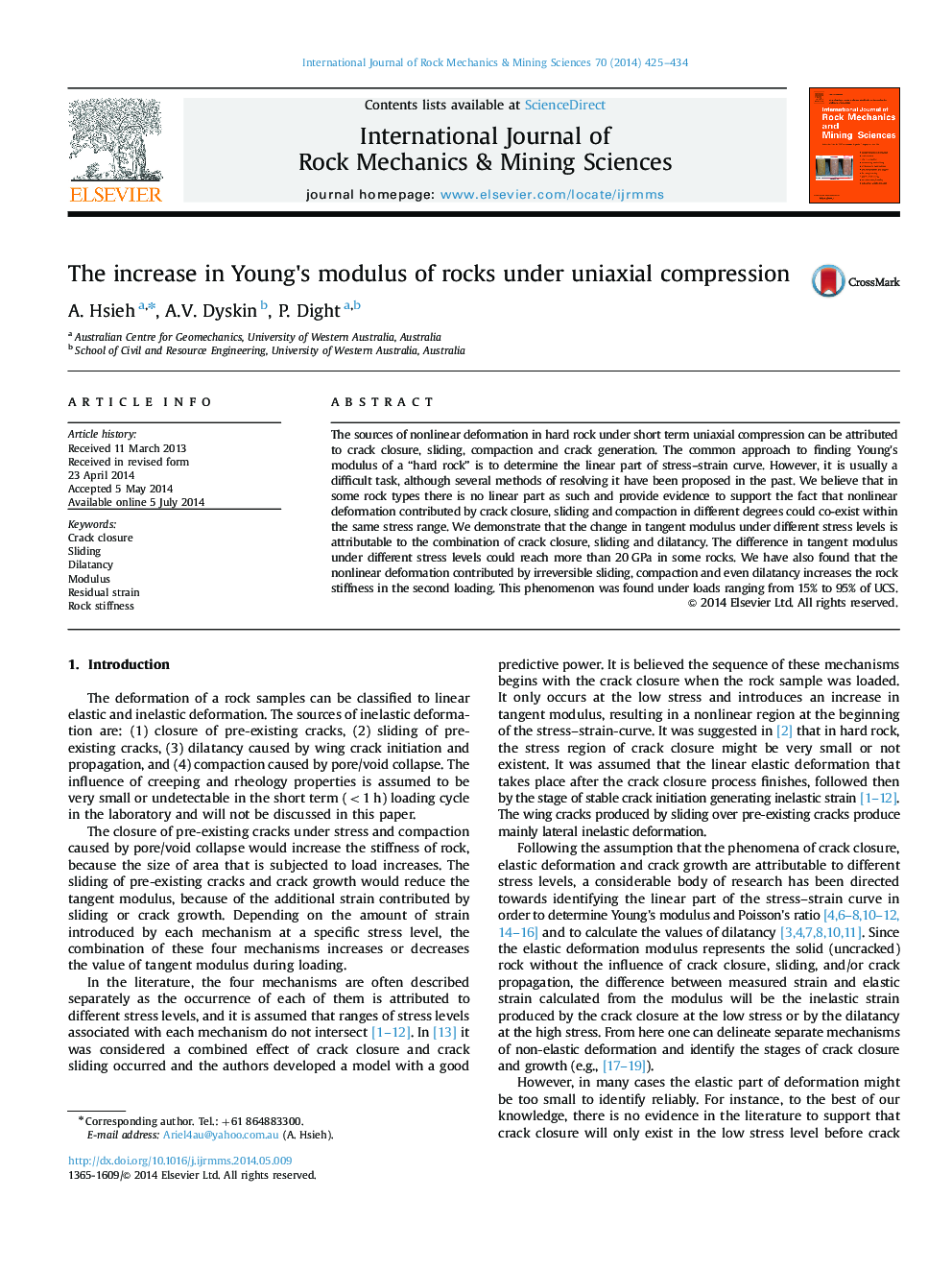| کد مقاله | کد نشریه | سال انتشار | مقاله انگلیسی | نسخه تمام متن |
|---|---|---|---|---|
| 809112 | 1468699 | 2014 | 10 صفحه PDF | دانلود رایگان |

• We found that the trend of tangent modulus at the 1st cycle can be expressed by 3 types of behaviour: increase type, constant type, and reduce type.
• We contend there is an overlapping of crack closure, sliding and crack propagation in the stress–strain curve.
• We found that contrary to a common belief that the rock reduces its stiffness after repeated loads it may actually increase.
• We experimentally showed that the secant modulus of the 2nd cycle is higher than it at the 1st cycle, and the increase is proportional to a certain portion of residual strain.
The sources of nonlinear deformation in hard rock under short term uniaxial compression can be attributed to crack closure, sliding, compaction and crack generation. The common approach to finding Young׳s modulus of a “hard rock” is to determine the linear part of stress–strain curve. However, it is usually a difficult task, although several methods of resolving it have been proposed in the past. We believe that in some rock types there is no linear part as such and provide evidence to support the fact that nonlinear deformation contributed by crack closure, sliding and compaction in different degrees could co-exist within the same stress range. We demonstrate that the change in tangent modulus under different stress levels is attributable to the combination of crack closure, sliding and dilatancy. The difference in tangent modulus under different stress levels could reach more than 20 GPa in some rocks. We have also found that the nonlinear deformation contributed by irreversible sliding, compaction and even dilatancy increases the rock stiffness in the second loading. This phenomenon was found under loads ranging from 15% to 95% of UCS.
Journal: International Journal of Rock Mechanics and Mining Sciences - Volume 70, September 2014, Pages 425–434